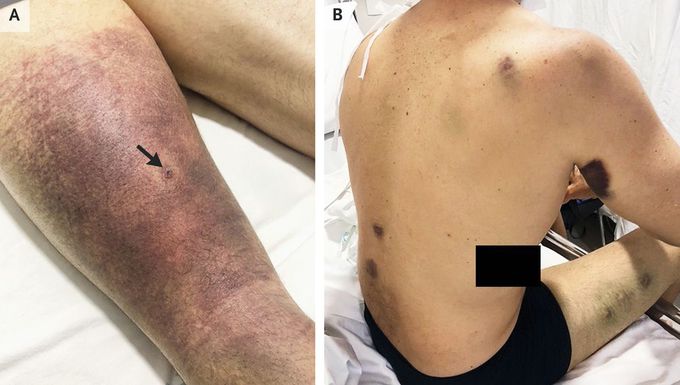


Lonomia obliqua Envenomation
A previously healthy 44-year-old man presented to urgent care with a 4-day history of spontaneous bruising and bloody urine. Three hours before symptom onset, he had been walking in the woods in southern Brazil when he felt a sharp prick on the back of his left thigh. On physical examination, there was a tender hematoma with a central bulla on the posterior left thigh (Panel A, arrow). The patient also had scattered ecchymoses across the body (Panel B), and his urine was pink in color. Results of laboratory studies were notable for mild anemia and thrombocytopenia; elevated prothrombin time and d-dimer level; and low fibrinogen and haptoglobin levels. The urinalysis showed hematuria; the serum creatinine level was normal. On the basis of the history and clinical findings, a diagnosis of hemorrhagic diathesis due to envenomation by the caterpillar species Lonomia obliqua was made. L. obliqua caterpillars are found in southern Brazil. When their bristles contact human skin, consumptive coagulopathy and hemorrhage may develop — a syndrome known as lonomism. Treatment with a single dose of immune globulin against L. obliqua venom was administered, and 3 hours later, the hematuria had abated. Within 12 hours after treatment was administered, the coagulation studies had begun normalizing.

